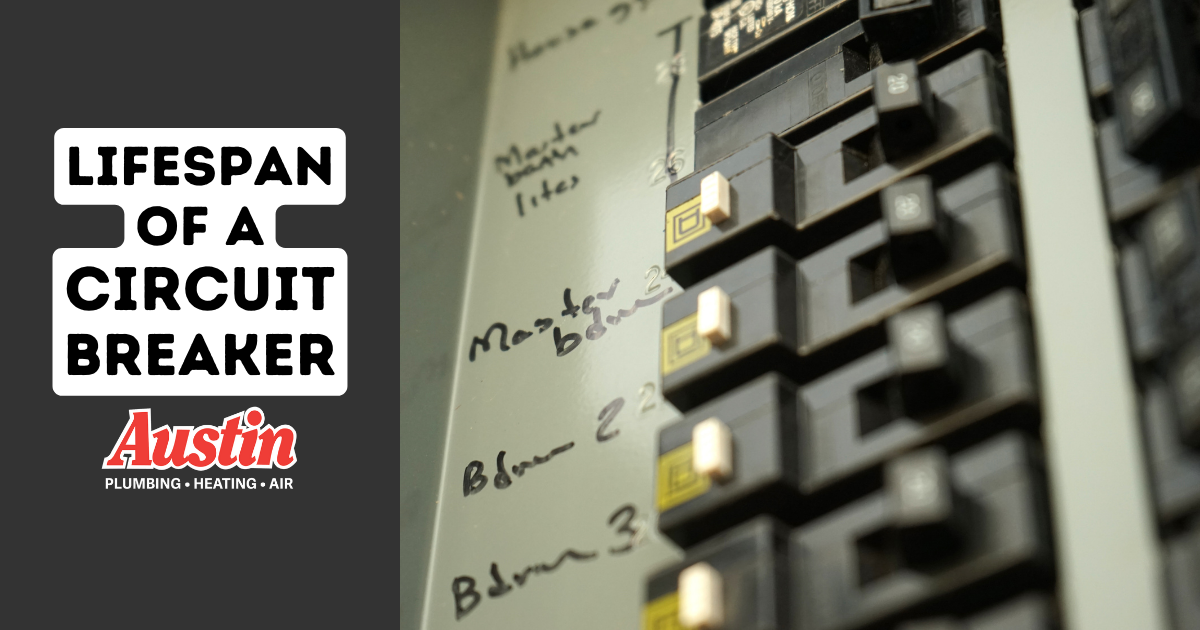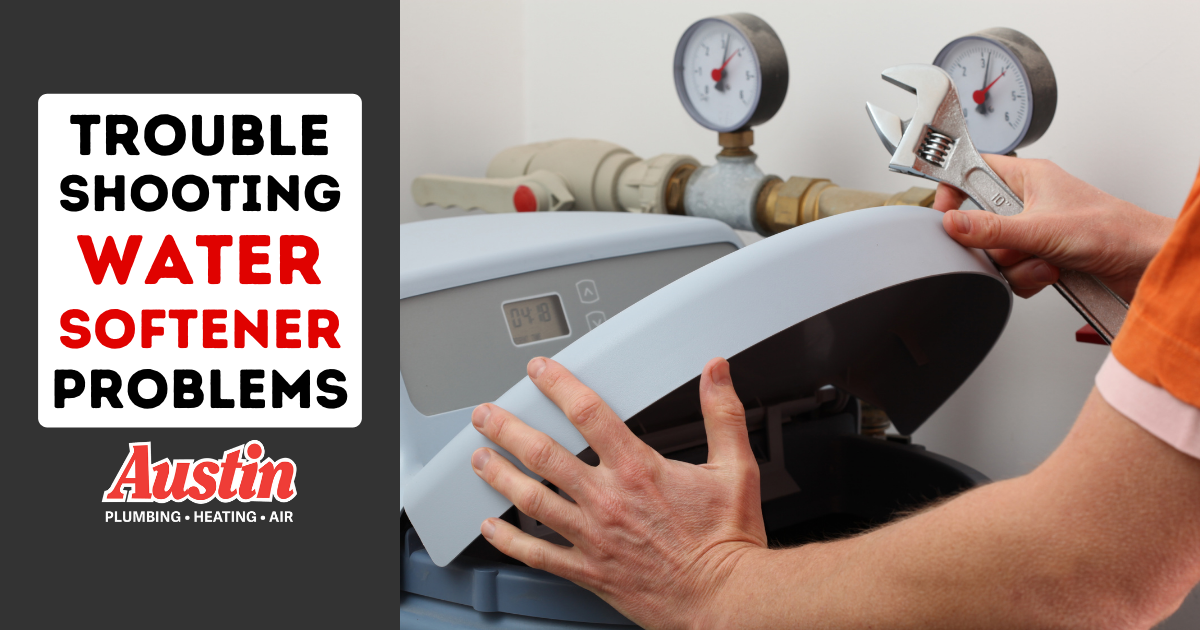Thermostat Programming | How To Program a T-Stat for Winter

Our Master Tradesman’s quick-start guide to programming your thermostat for the winter (and understanding why it matters)–including specific instructions for Honeywell, Nest, and Ecobee thermostats.
The cold season in Wisconsin hits hard. Marked by heavy snowfall and bitter windchill, it goes after homeowners and business owners alike–and quickly reveals any HVAC problems you didn’t know you had before.
What if the solution to so much discomfort were as simple as reprogramming your thermostat?
In This Guide: Thermostat Basics, Winter Specifics
You’re in the right place if you’ve got questions about any of the following:
- The three basic thermostat types (programmable, non-programmable, and “smart”),
- The purpose of winter thermostat programming,
- How to think like the experts when deciding which thermostat is right for you, and…
- What to do when you need a new thermostat installed.
First things first: Why worry about thermostat programming?
This is the #1 question we receive, and for good reason.
The short answer: Thermostat programming does make a difference.
Programmability isn’t some gimmick designed to trick you into thinking you have more control over your environment than you actually do. In fact, thermostat programming is a fundamental aspect of all heating and cooling systems–even the ones that lock users out of making direct changes.
“People went without fancy thermostats for decades. Why can’t I just rely on the manufacturer’s programming?”
Technically, you can. But given the choice, most people prefer not to.
Here’s the topic in a nutshell: In any heating system, there’s a direct relationship between energy consumption and heat output. That means if you can optimize the former, you’ll be improving the latter. And so, the biggest difference between traditional and modern thermostats lies in your ability to influence both of these factors.
What level of control do you need to be comfortable? That’s for you to decide.
Non-programmable Thermostats: Pros & Cons
Pros of a non-programmable thermostat (or “t-stat”):
Simplicity: Non-programmable thermostats are straightforward to operate, making them easy to use for individuals who prefer a basic interface.
Affordability: These thermostats are typically the most economical option, making them an attractive choice for those on a budget.
Reliability: They’re durable, with minimal maintenance requirements, and provide consistent heating control.
Universal Compatibility: Most of them are compatible with a range of heating systems, making them suitable for various setups.
No Learning Curve: Due to the lack of programming features, anyone can quickly learn to operate a non-programmable thermostat without the need for instructions.
Cons of a non-programmable t-stat:
Limited Control: Users cannot set different temperatures for different times of the day, which may result in less efficient heating and potential energy waste.
Inflexibility: Adjustments need to be made manually, meaning you have to remember to change the temperature settings each time you leave or return home.
Energy Efficiency Concerns: Without automated settings, there is a risk of maintaining higher temperatures when they are not needed, leading to higher energy bills.
Lack of Adaptability: These thermostats cannot adapt to changes in your routine or weather fluctuations. Not only does this result in seasonal discomfort; it should also be understood as a mitigating factor of their perceived cost-effectiveness.
Inability to Integrate: Non-programmable thermostats cannot be integrated into a smart home system for remote control and automation.
- Simply put, non-programmables are the old faithful of thermostats. Though still common in commercial settings, their use in home environments is quickly losing popularity for obvious reasons.
Facts about Programmable Thermostats
Programmable T-Stat Pros:
Energy Efficiency: Programmable thermostats allow you to set heating schedules, optimize temperature settings based on your daily routines, and save energy when you’re away or asleep.
Cost Savings: The ability to automatically adjust temperatures can lead to significant savings on heating costs over time by avoiding unnecessary heating.
Flexibility: Programmable thermostats offer different programming options, such as 7-day, 5+2 day, or 5-1-1 day schedules, allowing customization to suit your lifestyle.
Environmental Benefits: Reducing energy consumption through efficient programming contributes to a more sustainable and eco-friendly household.
Remote Access (Some Models): Advanced programmable thermostats can be controlled remotely via smartphone apps, providing convenience and control even when you’re not at home.
Cons of a programmable thermostat:
Initial Setup Complexity: Some users may find the initial programming setup a bit complex or time-consuming.
Upfront Cost: While programmable thermostats can provide long-term savings, the initial investment is higher than non-programmable options.
Learning Curve: Users may need some time to familiarize themselves with the features and programming options to maximize the thermostat’s potential.
Limited Flexibility in Some Models: Certain programmable thermostats may have limitations in terms of the number of heating zones or the complexity of scheduling options.
Compatibility Issues: Older heating systems may not be compatible with certain advanced programmable thermostat models.
Smart Thermostat Pros & Cons
Technically a subcategory of programmable stats, these strike a modern balance between user control and smart automation.
Pros of upgrading to a “smart stat”
Remote Control: Smart thermostats can be controlled and adjusted remotely through a smartphone app, providing convenience and flexibility.
Adaptive Learning: Some smart thermostats have AI capabilities that learn your preferences and adjust heating schedules accordingly, optimizing energy usage.
Energy Usage Insights: Smart thermostats often provide detailed reports and insights into your energy consumption, helping you make informed decisions to reduce energy usage.
Integration with Smart Homes: They can be integrated with other smart home devices, allowing for a centralized control system and automation for a connected living environment.
Voice Control (Some Models): Certain smart thermostats are compatible with voice assistants, enabling hands-free control and further enhancing convenience.
Potential downsides of making the switch:
Higher Initial Cost: Smart thermostats have a higher upfront cost compared to non-programmable and programmable thermostats.
Dependency on Internet: Remote control features are reliant on a stable internet connection, which may be a limitation in areas with poor connectivity.
Potential Privacy Concerns: Some users may have privacy concerns regarding the collection and usage of data by smart thermostats and associated apps.
Compatibility with Older Systems: Older heating systems may require additional modifications or upgrades to be compatible with smart thermostats.
Learning Curve: Like programmable thermostats, smart thermostats may have a learning curve for users unfamiliar with advanced technology.
Step-by-step Thermostat Programming for Wisconsin Winters
A Few General Considerations Before You Begin
Before diving into the specifics of each thermostat type, it’s important to consider a few factors that should influence your decision:
Household Schedule: Consider your typical daily and weekly routine, as this will help determine the level of thermostat programming flexibility you need.
Energy Consumption Goals: Determine whether your priority is to reduce energy consumption and lower utility bills or if you’re looking for a more straightforward heating control.
Technological Comfort Level: Evaluate your comfort level with technology and your willingness to adapt to different thermostat interfaces and programming capabilities.
Budget Constraints: Understand your budget constraints and factor in the initial cost, potential long-term savings, and added features when choosing a thermostat.
How to Program a Honeywell Thermostat
Programming a Honeywell thermostat is a straightforward process. Here’s a simple guide to help you get started:
- Press the “Menu” button on your Honeywell thermostat.
- Navigate to the “Schedule” or “Program” option using the arrow keys.
- Select the days and times you want to adjust the temperature settings for.
- Set the desired temperature for each time period (morning, day, evening, night).
- Save your programming settings.
If you require a more detailed walkthrough on how to program your honeywell thermostat we suggest looking in the owner’s manual that accompanies the thermostat or looking up the user manual online.
How to Program a NEST Smart Thermostat
Programming a NEST Smart Thermostat is user-friendly and can be done through the NEST app on your smartphone. Here’s a step-by-step guide:
- Open the NEST app on your smartphone and select your thermostat.
- Tap on the “Schedule” option.
- Adjust the temperature settings for different times and days as needed.
- Save your changes.
The NEST thermostat also has learning capabilities, adapting to your preferences and creating a schedule based on your adjustments over time.
If our basic run through on how to program your nest thermostat doesn’t answer all of your questions, you may find a more detailed setup and programming guide in the nest app or in the manual that came with your nest smart stat.
How to Program an Ecobee Thermostat
Programming an ecobee thermostat is intuitive and can be done directly on the device or through the ecobee app. Here’s a basic guide
- On the thermostat, tap the “Main Menu” button.
- Select “Schedule.”
- Adjust temperature settings for various time periods and days.
- Save your settings.
Alternatively, you can achieve more advanced programming through the ecobee app on your smartphone, allowing for remote control and customization.
Choosing the Right Thermostat for You
Selecting the ideal thermostat for your home requires considering your specific needs, lifestyle, and budget. Here are some considerations to help you decide:
Budget: If you’re looking for a budget-friendly option and don’t mind manual adjustments, a non-programmable thermostat may be suitable.
Routine and Flexibility: If you have a consistent daily routine and desire flexibility, a programmable thermostat can provide efficient heating without constant manual adjustments.
Technology Enthusiast: If you appreciate smart home technology, want remote control capabilities, and value energy savings, investing in a smart thermostat may be a wise choice.
Need Help With Your Heating System? Trust Austin Plumbing, Heating & Air
Whether you’re just looking to get a new thermostat or are shopping for an entirely new heating system, Austin Plumbing, Heating & Air is happy to help. Our team of skilled professionals can guide you in selecting the perfect thermostat for your needs–so you get comfort AND efficiency, without sacrificing one or the other.
Need to schedule an appointment with a heating technician regarding your thermostat? Call Team Austin at 262-367-3808 or book online today. We’re ready to hear from you! In the meantime, stay warm.





